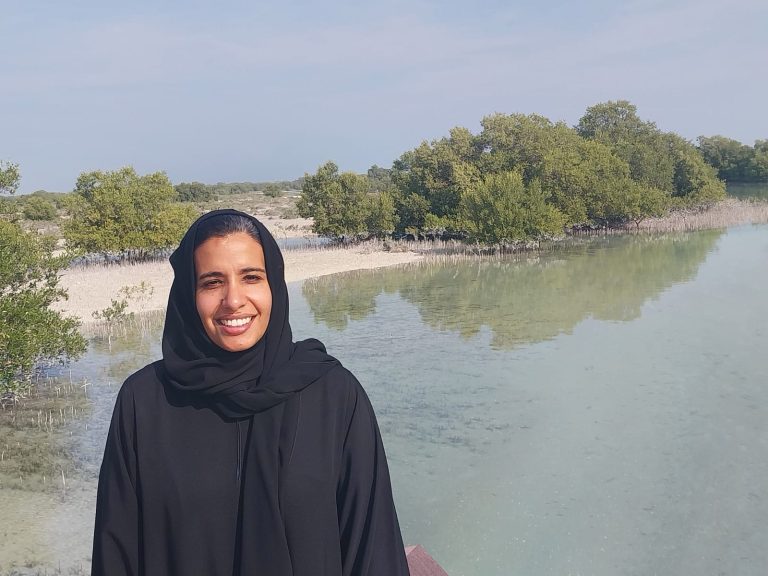Abu Dhabi – On a plot of land in the emirate of Abu Dhabi, the largest of the United Arab Emirates, the scenery of roads and buildings on the sand changes. Many don’t know, but the emirate is home to 176 square kilometers of mangroves. The vegetation can be seen in Jubail Mangrove Park, which received 300,000 visitors last year, promoting the local mangroves and the work to keep them alive.

Speaking to Brazilian journalists this Wednesday (13), the Marine Assessment and Conservation manager of the Abu Dhabi Environmental Agency, Maitha Mohamed Al Hameli (opening picture), reported that Jubail is the only mangrove park open to visitors in the emirate, but there are many areas with this biome near the coast of Abu Dhabi.
Hameli said that they serve as a nursery for fish. They are born there and then go to the ocean. In fact, on top of the white sand, in the waters of the Abu Dhabi park, you can see microfish circling and even some larger ones. The manager also reported that mangroves are important for carbon capture.
Holding a master’s in Science, Hameli said the mangrove restoration began in the 1970s with Sheikh Zayed bin Sultan Al Nahyan, then president of the UAE, and the work continued. One of the following steps will be creating a mangrove-focused research center in which Jubail Mangrove Park will be involved.

Like almost everything in the UAE, mangrove conservation and restoration also rely on the powerful help of technology. One million mangrove seeds were scattered over these vegetation areas in Abu Dhabi this year. The expectation is for the success rate to be around 48% – nearly half will grow into trees.
Jubail Mangrove Park serves as a postcard for Abu Dhabi’s conservation work. The place welcomes foreigners, local visitors, and groups of companies and schools. Hameli said that work with the mangrove is not just focused on restoration and research – there are also efforts to raise public awareness.
Activities take place through the Abu Dhabi Mangrove Initiative. The scientist reported collaboration with local and international partners to ensure that the best methodology is used and the highest success rate is obtained in the restoration and conservation of mangroves. Speaking about global warming, Hameli invited the world’s scientists to learn about the reality in the UAE in the mangroves so that knowledge could be optimized.

Jubail Mangrove Park calls itself a sanctuary, and in addition to fish and trees, it is home to many birds. A wooden boardwalk built over the mangrove allows visitors to see the local vegetation and biodiversity up close. On its website, the park says it aims to increase awareness, contemplation, and understanding of the ecological function of mangrove habitats. Visitors can also take kayak tours and participate in other scheduled activities on the site.
Among the attractions are a cafeteria and a gift shop. In the outside area of the park, there is a craft shop. The crafts are made by Emirati women and are on sale to encourage their work.
The journalist traveled at the invitation of the Embassy of the United Arab Emirates in Brazil
Translated by Elúsio Brasileiro




